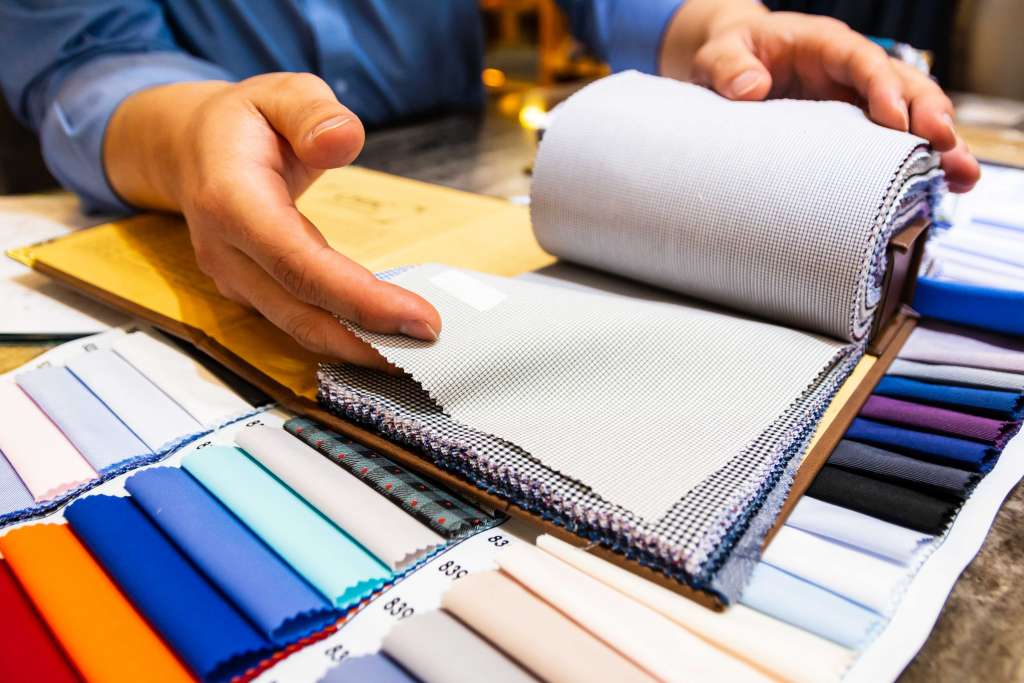How to Review or Study Reference Garment Sample?



Modern technology has made it easier for companies to create their clothing samples, from patterns to prototypes. Just a few years ago, this process could only be accomplished by those with the patience and expertise of a skilled artisan who would need to piece together each step, making it more complicated than necessary. Many software programs have been developed to make the process more accessible than ever before - you may want to keep this program in mind when designing your clothing line!
Reference garment samples can be extremely helpful for fitting, quality assurance, and product evaluation. However, you must first understand how to review or analyze a reference garment sample before you can use one properly.
Four Tips for Reviewing or Studying a Reference Garment Sample
1. Take Notes: When reviewing or studying a reference garment sample, take copious notes on everything you see and feel. It will help you better understand the garment, its construction, and how it fits.
2. Measurements Matter: Make sure to take accurate measurements of the garment's body and arms before proceeding. This information will help you determine if your size is correct.
3. Look at the Fabric: The fabric is another crucial element to consider while reviewing or studying a reference garment. Pay close attention to the material's type, weight, and texture. This information can help determine if the fabric is appropriate for your project.
4. Try on the Garment: Finally, don’t forget to try on the reference garment sample! It will allow you to experience firsthand how it feels and looks on your body. Following these tips can effectively review or study a reference garment sample.
Understanding the elements that make up a garment is essential when evaluating or studying reference garment samples. Each element serves a specific purpose and adds to the garment's overall appearance and feel.
To understand a garment thoroughly, it is helpful to be aware of all its parts.
Here are four key components to review or study when examining reference garment samples: fabric, fit, construction, and styling.

- Fabric: The most noticeable component of a garment is the fabric, and its appearance can influence how it looks and feels. Reference garment samples should be created of high-quality fabrics that are suitable for the season or event. Consider materials with a light texture and a sun-wearing feel for summer apparel, for example. Choose thicker textiles with a warming factor for winterwear. When analyzing reference garment samples, inspect the fabric for quality and stitching.
- Fit: A good fit is essential for comfortable wear. Reference garment samples should be tailored to fit each wearer without being too tight or loose. When reviewing reference garment samples, please pay attention to how the fabric stretches and whether it fits comfortably in all body areas.
- Construction: Reference garment samples should be well-made and of high quality. Poor construction can lead to uncomfortable wear, and it can also affect the durability of the garment. Be sure to examine the seams and closures for symmetry and quality.
- Styling: Reference garment samples should be styled to complement the individual wearer. When reviewing reference garment samples, consider the style, fit, and fabric choice. For example, a loose-fitting top might look better on someone with a smaller bust than on someone with a bigger bust.
Each of these four components is essential for assessing the quality and appropriateness of reference garment samples. It is important to clearly understand each before reviewing a sample.
What is the textile fabric texture?
The textile fabric texture is the surface finish of a textile, which results from how the yarns are spun and woven together. Textile fabric texture can be either glossy or matte, depending on how densely the yarns are packed together.
Glossy textile fabric textures have a high gloss and a smooth-to-the-touch appearance. Matte textile fabric textures can have a rougher appearance and be more textured. They can also be less glossy while being extremely smooth to the touch. There are numerous sorts of textile fabric textures, each with its own set of characteristics.
Matte textiles, for example, are frequently chosen for clothes because they are more durable than glossier fabrics. Textile fabric textures can also be used to enhance the structure or create a pattern in clothes.
How to determine the best textile fabric for a garment?
There are many factors to consider when selecting the suitable textile fabric for a garment. The type of fabric, the weight and fit, as well as the color and pattern, should all be considered. Here are some tips to help you determine the best textile fabric for your project.
Cotton, linen, silk, wool, and rayon are all fabric types. Each has distinct features that can influence the final output. Cotton, for example, is soft and lightweight, making it ideal for summer clothes. Linen is a sturdy and thick fabric that is perfect for products like jackets. Silk is a delicate but robust fabric that is ideal for dresses and lingerie. Wool is both warm and absorbent, making it ideal for winter clothing. Finally, rayon is a synthetic material that is lightweight and breathable, making it ideal for goods like blouses and skirts.
The weight and fit of the garment are also important factors to consider when selecting a textile fabric. For example, a lightweight fabric may be too sheer or see-through for a formal dress design item, while a heavier fabric may be too warm for summer clothing. The fit of the garment also includes measurements such as length, width, and waist size. A tailored garment will require a different fabric than an item meant to be comfortable and easy to wear.
Finally, the color and pattern of the textile should be considered when selecting a fabric. A specific color or pattern fabric will make a project more unique and colorful. However, particular colors or patterns may not work with all clothing styles. For example, a bright pink dress might not work well with a black bodice or skirt.
Conclusion
Reference garment samples are a valuable tool for seamstresses, fashion designers, and anyone who needs to know how a specific item of clothing should fit. When you receive a reference garment sample, it's important to take the time to review the information included in the package—this will help you understand how to best wear and care for the sample so that it lasts as long as possible.
Sign up with Fashinza and discover how it is helping in making manufacturing simplified! When you partner with Fashinza it has you covered with over 400+ clothing manufacturers and a dedicated team to help you find the perfect customization!




















